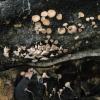
28-10-2025 22:22
 Bernard Declercq
Bernard Declercq
Hello.I'm searching for the following paper:Punith

28-10-2025 22:03
 Bernard Declercq
Bernard Declercq
Hello.I'm searching for the following paper:Punith

28-10-2025 19:33
 Nicolas Suberbielle
Nicolas Suberbielle
Bonjour à tous,Je voudrais votre avis sur cette r

28-10-2025 15:37
Carl FarmerI'd be grateful for any suggestions for this strik

28-10-2025 11:29
 Tanja Böhning
Tanja Böhning
Hello, I found this very small (ca 0,5mm) yellow

27-10-2025 00:34
 Francois Guay
Francois Guay
I found this strange species in Québec,Canada, gr

27-10-2025 15:29
 Michel Hairaud
Michel Hairaud
Bonjour à tous, Avec Elisabeth Stöckli nous avo

26-10-2025 13:39
Joaquin MartinHi,I found this fungus in a mixed forest of spruce
En corteza de Eucalyptus
Javier Ormad,
14-01-2011 23:14
Forma acopada. Pileo bastante redondeado, de 2 mm de diámetro. Himenio violeta claro con margen evidente que forma una fina línea blanquecina. Parte externa concolor pero menos violácea; a la lupa finamente furfurácea, como espolvoreada de blanco; en los ejemplares algo resecos se arruga un poco.Pie que llega a los 3 mm. de altura, algo más ancho en la parte superior (350 micras) que en la inferior (200 micras). Externamente la mitad superior violácea progresivamente hacia abajo más oscura quedando la mitad inferior negruzca; a la lupa presenta dispersos pelos rectos y hialinos, sobretodo en la mitad inferior. Los pies están implantados en las grietas de la corteza y zona de la corteza donde están los ejemplares es negruzca.
Hymenoscyphus initially thinking, but subsequently be no clarity even genre.
Cupped shape. Pileus rather rounded, 2 mm in diameter. Hymenium pale violet with clear margin that forms a thin white line. Concolor outside but less purple, finely furfuraceous the magnifying glass, and sprinkled white in dried specimens somewhat wrinkled one poco. Pileus that reaches 3 mm. high, slightly wider at the top (350 microns) than the lower (200 microns). Externally the upper half purple gradually becoming darker down the lower half blackish; under magnification shows scattered straight hairs hyaline, especially in the lower half. The feet are planted in the crevices of the bark and bark area where specimens are blackish.
Javier Ormad,
14-01-2011 23:23
Re:En corteza de Eucalyptus
Asci cylindrical, 65-70 x 5-7 microns, aporrinchas, with 8 spores in two rows at the end. I + weak in the end. Paraphyses cylindrical, septate, 2 microns in diameter, containing some slightly greenish, rather dispersed, with no apparent guttae. Spores elliptic-fusiform, 8-9 x 2 microns, with some tiny granules. In the pileus, the external excípulo consists of a thin layer of spherical cells, 8-10 microns, purplish coloration, some of which are small groupings and elements somewhat hyaline pyriform, finely furfuraceous responsible for the appearance that viewed under magnification. In the marginal zone is shaped like a slightly cylindrical elements palisade, hyaline. Inland presents a hyphal weft, with branched hyphae of 2 microns diámetro. La foot structure is somewhat different, for the most part are parallel hyphae with cylindrical cells, many of which are slightly tapered at the ends of 20 - 30 x 4-6 microns, of reddish purple color with slightly thickened walls and many of them presented specific scale, the peripheral cell layer form a shorter but without being spherical, outside, on top there some small and scattered cellular clusters while the lower half are fine hairs hyaline septate, up to 100 x 3 microns.
Ascas cilíndricas, de 65-70 x 5-7 micras, aporrincas, con 8 esporas en dos hileras al final. I+ débil en el extremo. Paráfisis cilíndricas, septadas, de 2 micras de diámetro, algunas con contenido ligeramente verdoso, más bien disperso, sin gútulas aparentes. Esporas elíptico-fusiformes, de 8-9 x 2 micras, con algunos diminutos gránulos. En el píleo, el excípulo externo está formado por una fina capa de células esféricas, de 8-10 micras, de coloración ligeramente violácea, algunas de las cuales forman pequeñas agrupaciones más hialinas y con elementos algo piriformes, responsables del aspecto finamente furfuráceo que se veía a la lupa. En la zona marginal se forma como una empalizada de elementos ligeramente cilíndricos, hialinos. Hacia el interior se presenta una trama hifal, con hifas ramificadas, de 2 micras de diámetro. La estructura del pie es algo diferente; en su mayor parte son hifas paralelas con células cilíndricas, muchas de ellas ligeramente estrechadas en los extremos, de 20-30 x 4-6 micras, de coloración violácea, con las paredes un poco engrosadas y muchas de ellas presentado incrustaciones puntuales; las periféricas forman una capa de células más cortas pero sin llegar a ser esféricas; en el exterior, en la parte superior hay algunas pequeñas y dispersas agrupaciones celulares mientras que en la mitad inferior se presentan finos pelos hialinos septados, de hasta 100 x 3 micras.
Ascas cilíndricas, de 65-70 x 5-7 micras, aporrincas, con 8 esporas en dos hileras al final. I+ débil en el extremo. Paráfisis cilíndricas, septadas, de 2 micras de diámetro, algunas con contenido ligeramente verdoso, más bien disperso, sin gútulas aparentes. Esporas elíptico-fusiformes, de 8-9 x 2 micras, con algunos diminutos gránulos. En el píleo, el excípulo externo está formado por una fina capa de células esféricas, de 8-10 micras, de coloración ligeramente violácea, algunas de las cuales forman pequeñas agrupaciones más hialinas y con elementos algo piriformes, responsables del aspecto finamente furfuráceo que se veía a la lupa. En la zona marginal se forma como una empalizada de elementos ligeramente cilíndricos, hialinos. Hacia el interior se presenta una trama hifal, con hifas ramificadas, de 2 micras de diámetro. La estructura del pie es algo diferente; en su mayor parte son hifas paralelas con células cilíndricas, muchas de ellas ligeramente estrechadas en los extremos, de 20-30 x 4-6 micras, de coloración violácea, con las paredes un poco engrosadas y muchas de ellas presentado incrustaciones puntuales; las periféricas forman una capa de células más cortas pero sin llegar a ser esféricas; en el exterior, en la parte superior hay algunas pequeñas y dispersas agrupaciones celulares mientras que en la mitad inferior se presentan finos pelos hialinos septados, de hasta 100 x 3 micras.
Hans-Otto Baral,
15-01-2011 00:13

Re:En corteza de Eucalyptus
Looks for me a bit like a Sclerotiniaceae. Could you please try to make a photo of an ascus apex in iodine? The ascus should be dead, so perhaps use a flame to shortly boil the mount and then add IKI.
Zotto
Zotto
Hans-Otto Baral,
15-01-2011 10:24

Re:En corteza de Eucalyptus
Well done. Looks quite negative, pff. I think about the genus Moellerodiscus (lentus), but I am not sure.
M. lentus has a few regular oil drops in the spores. In your specimen this is not clear to me.
Zotto
M. lentus has a few regular oil drops in the spores. In your specimen this is not clear to me.
Zotto
Javier Ormad,
15-01-2011 11:27
Re:En corteza de Eucalyptus
I watched your DVD on Moellerodiscus and certainly has a similarity, likewise another specimen on Ceratonia siliqua, also is very similar. It is curious that harm the soil where it is, Eucalyptus camaldulensis, not much information?. I can only send this picture of spores than what has already sent.
Thanks, as always.
Kind regards
Javier
Thanks, as always.
Kind regards
Javier
Hans-Otto Baral,
15-01-2011 13:56

Re:En corteza de Eucalyptus
yes, on this spore pic 2-3 spores look fine with their oil drops. Most if not all are dead, therefore the oil drops are not regular.
Your statement of aporhynchous ascus bases is very important. Are you sure? M. lentus has usually croziers, but we have one collection (by Michel Hairaud on old apples) which is actually aporhynchic.
It is best to mount in KOH + Congo Red to see the croziers clearly.
Zotto
Your statement of aporhynchous ascus bases is very important. Are you sure? M. lentus has usually croziers, but we have one collection (by Michel Hairaud on old apples) which is actually aporhynchic.
It is best to mount in KOH + Congo Red to see the croziers clearly.
Zotto
Raúl Tena Lahoz,
15-01-2011 18:26

Re:En corteza de Eucalyptus
Hi Javier and Zotto
I cannot talk about Javiers find on bark Eucalyptus. Maybe Javier can let me study one sample?
But we are used to collect here at El Saler a similar species on Ceratonia siliqua. It mostly grows on ¿stromatized? seeds that are still inside the pod, but also on pods, and rarely on little twigs and petioles. I think that it is very similar to the find of Michel Hairaud on Malus fruits (HB 6724). In our case also there are no croziers, but in some asci you can see an incomplete crozier or basal protuberance (you have to seek a lot and it not appears in all apothecia). Moreover, the cells of the ectal excipulum are inconstantly amyloid in IKI and amyloid in IKI after KOH pre-treatment.
The same species but so different host? Very difficult group...
I attach more pics of the species that grows on Ceratonia siliqua in the pdf file.
No puedo hablar de la recolecta de Javier en corteza de Eucalyptus. ¿Me guardas una muestra Javier? Pero estamos acostumbrados a recolectar aquí en El Saler sobre Ceratonia siliqua una especie parecida. Crece sobre todo en semillas ¿estromatizadas? que están todavía dentro de la vaina, pero también en las vainas y más raramente sobre pequeñas ramitas y peciolos. Creo que es muy similar a la recolecta de Michel Hairaud sobre manzanas (HB 6724). En nuestro caso tampoco hay uncínulos basales pero en alguna asca se puede ver un uncínulo incompleto o protuberancia basal (hay que buscar mucho y hay apotecios en los que no aparecen). Además las células del excípulo ectal son inconstantemente amiloides en IKI y amiloides en IKI tras un pretratamiento con KOH.
¿La misma especie en huéspedes tan diferentes? Es un grupo muy difícil...
Adjunto más imágenes de la especie sobre Ceratonia siliqua en el pdf.
Raúl
I cannot talk about Javiers find on bark Eucalyptus. Maybe Javier can let me study one sample?
But we are used to collect here at El Saler a similar species on Ceratonia siliqua. It mostly grows on ¿stromatized? seeds that are still inside the pod, but also on pods, and rarely on little twigs and petioles. I think that it is very similar to the find of Michel Hairaud on Malus fruits (HB 6724). In our case also there are no croziers, but in some asci you can see an incomplete crozier or basal protuberance (you have to seek a lot and it not appears in all apothecia). Moreover, the cells of the ectal excipulum are inconstantly amyloid in IKI and amyloid in IKI after KOH pre-treatment.
The same species but so different host? Very difficult group...
I attach more pics of the species that grows on Ceratonia siliqua in the pdf file.
No puedo hablar de la recolecta de Javier en corteza de Eucalyptus. ¿Me guardas una muestra Javier? Pero estamos acostumbrados a recolectar aquí en El Saler sobre Ceratonia siliqua una especie parecida. Crece sobre todo en semillas ¿estromatizadas? que están todavía dentro de la vaina, pero también en las vainas y más raramente sobre pequeñas ramitas y peciolos. Creo que es muy similar a la recolecta de Michel Hairaud sobre manzanas (HB 6724). En nuestro caso tampoco hay uncínulos basales pero en alguna asca se puede ver un uncínulo incompleto o protuberancia basal (hay que buscar mucho y hay apotecios en los que no aparecen). Además las células del excípulo ectal son inconstantemente amiloides en IKI y amiloides en IKI tras un pretratamiento con KOH.
¿La misma especie en huéspedes tan diferentes? Es un grupo muy difícil...
Adjunto más imágenes de la especie sobre Ceratonia siliqua en el pdf.
Raúl
Hans-Otto Baral,
15-01-2011 19:16

Re:En corteza de Eucalyptus
Hi Raul
it is strange but I have only some scans of diapositives about these Ceratonia finds. Are they yours? I have no info about that, and not on the ascus base either.
Could you please send me the photos in the attached pdf by mail, at best as single jpg files?
thanks
Zotto
it is strange but I have only some scans of diapositives about these Ceratonia finds. Are they yours? I have no info about that, and not on the ascus base either.
Could you please send me the photos in the attached pdf by mail, at best as single jpg files?
thanks
Zotto
Raúl Tena Lahoz,
15-01-2011 19:59

Re:En corteza de Eucalyptus
No, not mine. I send the pics now to your e-mail.
Raúl
Raúl

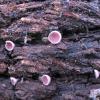
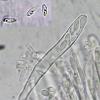
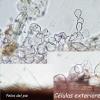
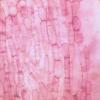
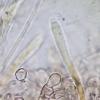
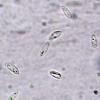
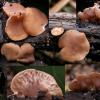
 13931.pdf
13931.pdf